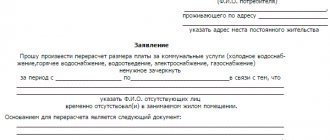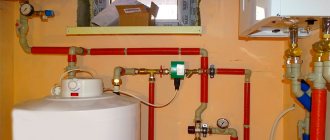Gas has long been widely used for domestic purposes due to its environmental friendliness and availability. Heating and cooking food is much cheaper with gas than, for example, with electricity.
Today, gas meters have become widespread, regulating the consumption of blue fuel within one apartment for the purpose of additional savings.
But many residents continue to use gas without meters, installing meters only for the consumption of electricity, cold and hot water.
Residents without meters have to pay for gas heating according to approved tariffs. Gas consumption standards for 1 person without a meter are constantly changing and approved at the regional level.
Gas metering
In a private house, unlike an apartment, meters are usually installed if there is gas supply . There, the owner of the house has a separate boiler room, where he is able to independently regulate the heat supply.
Heating a house of 100 or more square meters with electricity is very expensive. Therefore, even those home owners who do not have gas try to install heating boilers, where they throw coal, wood, and pellet pellets as fuel.
Before installing a gas meter in your apartment, you need to know that:
- It must comply with the regulations on the permissible type of use.
- It must be sealed and installed by gas service specialists.
- It has a limited service life, after which it requires verification, repair or replacement.
The owner of the meter must take monthly readings from the device and pay for the wasted heat . This is his responsibility, which is documented in the contract for the receipt of utility services.
To calculate the amount of gas consumed, the meter owner multiplies the approved tariff by the volume of the resource.
The apartment resident must provide the service provider with meter readings in 2021 by the 10th day of each month of the year. If he is late in submitting his readings, the calculation will be made based on the average consumption value for the previous annual period.
This method of calculation in case of delay is valid only for 3 months . After this, gas will be billed according to standards. That is, the rate of gas consumption per person per month should be known even to those citizens who use metering meters.
What determines the tariff calculation?
Gas is much more economically feasible to use than other fuel options. However, we should not forget that gas is fraught with certain dangers. If used incorrectly and leaked, it can cause an apartment to explode, which can kill dozens of people.
No one is immune from creating an intentional gas leak, when antisocial residents of an apartment building do not turn off the gas on the stove to settle accounts with their lives or due to their own inadequacy.
Such fatal mistakes can also be made by unattended children or older citizens suffering from certain diseases associated with forgetfulness.
Therefore, special services regularly check the central gas pipeline of an apartment building to determine its serviceability and the need for repairs.
Let's not forget the gas explosion incident in Magnitogorsk, where the disaster claimed the lives of more than 30 people on New Year's Eve.
The tariff for gas consumed depends on:
- official regional tariff;
- volumes of resource consumed;
- the presence or absence of benefits for utility bills.
The tariff essentially includes the costs of fuel production and transportation . Gas consumers see the final total figure in their monthly receipts.
Tariffs for gas heating in the country are annually indexed taking into account inflation processes.
Is it necessary to install a meter in an apartment?
In the past, the law required installing a gas meter in the apartment. But recently it has become irrelevant. Those who use gas exclusively for cooking were exempted from the obligation to install meters.
The law states that if gas consumption is no more than 2.1 cubic meters per hour, installation of the device is not required.
Note!
Installation of a gas meter depends on the desires and capabilities of the owner.
Manufacturers produce several types of meters:
- rotary;
- membrane;
- electronic;
- volumetric.
Rotary: do not make noise, are checked every five years, are relatively inexpensive.
Membrane: a simple device, reliable, affordable, but they have some disadvantages - they make a lot of noise, are large, and require frequent checking.
Electronic: small size, high accuracy, silent, checked once every ten years. Quite expensive.
Volumetric: high-quality and inexpensive. Check once every ten years. Among the disadvantages, consumers note loud noise and large dimensions.
To make your choice, you need to consider important points:
- price;
- required level of noise emitted;
- device size;
- mounting location;
- required inspection frequency.
Note!
Gas meters can be installed both indoors and outdoors.
Many types of devices can withstand temperatures from low to high.
Here are some tips for choosing: if your apartment or house has a gas water heater or stove, then a rotary or electronic meter is better suited. If the house also has a gas boiler, then a volumetric or membrane meter is suitable. According to consumer market data, the most inexpensive device costs about 1,100 rubles. To mount the controller on two devices: a gas flow-through heater and a stove, the meter will cost approximately three thousand rubles. No installation fee.
Note!
In some cases, installation requires replacement of pipes or parts thereof at the location where the device is mounted. Also, before starting installation of the controller, a mounting diagram is drawn up.
An electronic meter is ideal for indoor installation. Most consumers choose it for its small size and noise level.
If you have a gas boiler and stove, it is better to choose a meter with a capacity of up to twenty-five cubic meters of gas per hour. If the stove only runs on gas, then a capacity of more than five cubic meters is not needed.
Note!
The installation of gas meters should only be carried out by workers with special education.
Gas metering without meters
Gas consumption rates for the population can vary significantly depending on the region of consumption.
So, for example, in the region where blue fuel is produced, tariffs will be lower than in regions without such production.
Gas is used in everyday life in three ways, based on which consumption standards and units of measurement are established:
- For heating water and cooking - for each person registered in the apartment (cub.m./person).
- For heating in the period from October to April - per 1 square meter of area (cub.m/sq.m).
It is planned that from July 2021 gas tariffs will be increased by 8.5%, which is higher than the annual indexation of 7%.
Decree of the Government of the Russian Federation No. 373 also regulates the minimum acceptable standards for the population in houses where there are no individual metering devices. Residents cannot consume below the limits. This is the minimum they are required to pay each month.
Standards per person by region
The indicators presented below reflect the standards per person consuming gas in various regions as of January 1, 2021:
- Moscow and Moscow region – 10;
- Leningrad region -13;
- Sverdlovsk region – 10.2;
- Novosibirsk region – 10;
- Krasnodar region – 11.3;
- Perm region – 12;
- Samara and Rostov regions – 13;
- Bashkortostan – 12;
- Crimea – 11.3.
All indicators are expressed in 1 cubic meter/person . Tariffs apply if central water supply and central heating are available.
In private homes, gas consumption tariffs apply not only to residential premises, but also to non-residential buildings.
If there is a farm, resource consumption is calculated taking into account each unit of livestock. For example, for each cow per month there are 11.5 square meters.
Gas tariffs
Tariffs for blue fuel are constantly increasing by an average of 7% per year. For 2021 the following values apply:
- Moscow and Moscow region – 6.74;
- Leningrad region – 6.4;
- Sverdlovsk region – 5.1;
- Novosibirsk region – 5.83;
- Krasnodar Territory - 6.23;
- Omsk region – 8.12;
- Saratov region – 8.96;
- Bashkortostan - 6.98.
Tariffs are set in rubles per 1 cubic meter of gas . The tariff in Moscow of 6.74 rubles applies only to the gas heater in the apartment. Muscovites pay 4,593 rubles for heating using gas.
It turns out that it is quite difficult to understand the tariffs, so it is much more convenient to install gas meters. Otherwise, the receipts may contain any numbers; the Government Resolution provides sufficient grounds for changing them.
Setting standards if there is no gas meter
If a gas meter is not installed, the payment amount is determined according to approved standards. When calculating the amount of payment, consumers are divided into categories that take into account the following features:
- the presence of gas-fired stoves for heating purposes and for heating water, with a centralized supply;
- use of water heating gas appliances;
- if gas is used only for cooking;
- when installing heating devices operating on a gas mixture.
The limits of tariff plans that are allowed to be set are defined in the annex to government decree No. 373, adopted in June 2006, and take into account whether the object belongs to one of the above categories.
The calculation formula provides for the impact on the final cost of payment of the following characteristics:
- size of areas of residential and non-residential sectors;
- the number of people living in the apartment;
- degree of improvement of living space.
The standard is determined per tenant and multiplied by the total number of people officially registered in the apartment and temporarily staying here.
When calculating standards for agricultural facilities, the tariff is influenced by the number of livestock and the characteristics of the household.
What changes can we expect in terms of tariffs in 2021?
Gas tariffs are constantly rising, especially for residents of the capital, who complain that income growth lags behind the increase in utility costs.
The Russian government has developed a scheme for the next 3 years to increase gas tariffs. Bottled gas prices will increase by 4.1% this year, gas through steam distributors will increase by 5%.
The most expensive tariffs will still remain in the north of the country due to difficulties in gas transportation.
Gas prices are planned to increase in the following amounts:
- for housing stock - by 8.5%;
- for enterprises – by 7.5%.
Gas fuel prices are rising or not – it doesn’t matter . Many citizens have not paid for gas and continue to not pay for it. Such residents usually ignore not only heating obligations, but also other utility receipts.
This year, fines for non-payment of gas have doubled, and the penalty is 17.7% per year of the unpaid amount.
Expert advice
If you adhere to all generally accepted rules and submit readings to utility companies on time, you can protect yourself from trouble. You can immediately notice a significant difference between paying with an accounting device and without installing it.
To save money, you will need to purchase a unit and install it, but these expenses will quickly pay off, so don’t worry. Having figured out how to calculate gas from a meter, any owner will be able to carry out the manipulations independently, and perhaps teach inexperienced users if necessary. Long before installing the meter, experts advise familiarizing yourself with all the nuances of the process.
How to save gas fuel?
Of course, using a gas meter is more profitable than paying expenses according to approved standards. So the apartment owner pays only for what he himself consumed in the current period.
You can reduce meter readings and gas costs using the following methods:
- Ensure thermal insulation of the apartment, install a reliable door and windows.
- Regulate the temperature regime and the flow of coolant to avoid overconsumption.
- Checking gas consuming equipment.
- Checking the serviceability of the heating boiler automation.
- Floor insulation in cool rooms (warm floors or carpets).
When choosing a heating boiler, you need to take into account its technical characteristics specified in the documentation . First of all, the efficiency of the device is important. By paying attention to the amount of resources consumed, you can significantly reduce the readings on gas receipts.
Gas is consumed daily by millions of people as the most economical and efficient fuel . Gas tariffs and calculation standards are constantly increasing in the country, which is why it is more profitable and expedient today to install gas meters to account for the volume of resource consumed.
Ways to save fuel
The main opportunity to reduce costs is to install a meter. The formula with payment for the volume consumed will be beneficial primarily for the population: gas consumption rates in the case of 90% of apartments will exceed real consumption. Accruals based on standards will lead to increased financial burden.
Tariff features:
- Payment for consumed volume: minimum and increased tariffs apply.
- Payment according to standards: domestic gas use, number of residents and housing area matter.
One of the saving options is to maintain the normal condition of gas equipment. Frequent checks of gas-using appliances will allow timely identification of technical faults, which not only lead to increased gas consumption, but also pose a danger.
If problems arise and the equipment operates with very low power or breaks down, then you need to check the ventilation for the gas appliance, or even better, call a gas technician right away
A non-working boiler will consume at least 1 cubic meter of fuel per day. The heating efficiency of individual rooms is increased thanks to sensors with preset indicators for automatic boiler systems.
Savings can be achieved by simply preventing the penetration of cold air masses, as well as by optimizing the microclimate in a house or apartment. Reliable thermal insulation combined with sealing of window structures and door frames will eliminate heat leakage.
Monitoring temperature conditions will also give results. It is enough just to reduce the heating intensity during periods of absence and monitor the temperature regime, and the money will remain with the consumer.
Standard practice calls for regulating the flow of energy into appliances in individual rooms. In cool rooms, surfaces are insulated with carpets and other heat-insulating coverings.
Insulating the facade of a private house or apartment building will significantly increase the comfort for residents and save up to 25% of the total consumption of blue fuel
Smart consumers also pay attention to the ventilation system. It is known that supply-type ventilation in the kitchen, when the pressure in the room decreases, will intensively supply cold air from the outside.
Even at the stage of purchasing household gas appliances, you should ask about their efficiency and efficiency in terms of energy efficiency. The documentation for devices usually contains such information.
Debt
Many consumers do not pay utility bills. Changes in gas prices have no effect on the debt problem. Experts say that some categories of citizens refuse to pay for gas not because of rising fuel prices, but because of personal convictions.
The authorities regularly introduce various programs to encourage the population to pay for utilities. Regarding gas supply, consumers are required to pay their bills every month by the 10th of the month. If a citizen stops making payments, he will be fined. The amount of collections is 17.7% of the annual debt.
We recommend reading: Is it possible to get away with just a fine for non-payment and for unauthorized connection to gas
The debtor begins to be fined after three months of non-payment. The state provides penalties for companies that provide public services. If such companies use low-quality fuel or supply gas irregularly, they must pay 1/170 of the refinancing.
The procedure for determining gas consumption standards
Calculation of standards is carried out by government authorities of the Russian Federation. The specifics of establishing standards are regulated by the orders of the Regional Energy Commission. The permissible amount of gas consumed depends on the different uses of the fuel. Different formulas are used for each purpose of gas use.
Types of gas consumption:
- cooking;
- heating water using a gas water heater or on a stove (this option is used when there is no central water supply);
- heating (when there is no central line for heating the house).
Consumption rates for liquefied and natural gas are calculated using different methods. In private houses, outbuildings are heated using blue fuel; when establishing standards, the area of the premises, the presence and number of animals, the number of citizens registered on the site, and connection to central highways are taken into account. The formula also depends on the type of gas - natural or liquefied.
We recommend: How much does liquefied gas delivery cost?
Fuel consumption can be recalculated using a special online calculator. It is enough to enter the initial data, and the program itself will select the formula.
How to take meter readings?
Taking readings from the meter will not cause difficulties. Each counter has a mechanical display with rollers on which numbers are printed. In most cases, there are 7 or 8 videos, of which the 3 on the right are separated by a comma and placed in a red frame. They are not paid attention to when taking readings. For example, if the counter display shows 00458, 356, then the numbers 356 are not taken into account, and the data on the number of cubes consumed will be the numbers 00458. They are entered into the receipt, but without zeros. If one of the clips is stuck between numbers, then the previous one is recorded, for example, 9 is selected from 9 and 0.
Taking readings from the gas meter
The readings are calculated using the same principle if an electronic blue fuel consumption device is installed.
Legislative acts
One of the fundamental documents of the housing and communal services sector is considered to be Law No. 69-FZ of March 31, 1999 “On gas supply in the Russian Federation”. Resolution of the Government of the Russian Federation dated 02/05/98 No. 162 approved the rules for gas supply to the population, which were clarified by Resolution No. 549 dated 07/21/2008.
To more fully meet the needs of the population and increase the efficiency of gas supply, methods for calculating payments and accounting for gas consumption are constantly being improved:
- The foundations are laid by the Gas Accounting Rules.
- The procedure for payments for all types of energy is approved by Decree of the Government of the Russian Federation dated April 4, 2000 No. 294.
- Guidelines for calculating the cost of gas for the population are determined by Order of the Federal Tariff Service of the Russian Federation dated October 27, 2011 N 252-e/2.
In what cases can a recalculation be made?
In some cases, it is possible to recalculate gas payments in the absence of meters. They are described below.
Temporary absence
Until 2021, it was enough to submit an application to carry out the recalculation. Currently, Decree of the Government of the Russian Federation No. 354 (clause 86) gives such a right only if it is impossible to install a meter, which must be confirmed by the commission by issuing an inspection report. If you have such a right, an application is submitted to the gas supplier organization accompanied by documents proving temporary absence (more than 5 days).
Changing the number of registered people
For recalculation, an application is submitted and documents are attached confirming the departure (discharge) of previously registered residents. Calculations will be made based on the number of registered residents. If the registered citizens do not actually live for a long time or have even left the region, then this fact will have to be proven in court by attracting witnesses.
You do not live at this address
Calculations will be made based on the number of apartment owners, regardless of their place of residence.
Recalculation requires submitting an application to the gas supply organization and providing evidence . Disputes are resolved in court.




